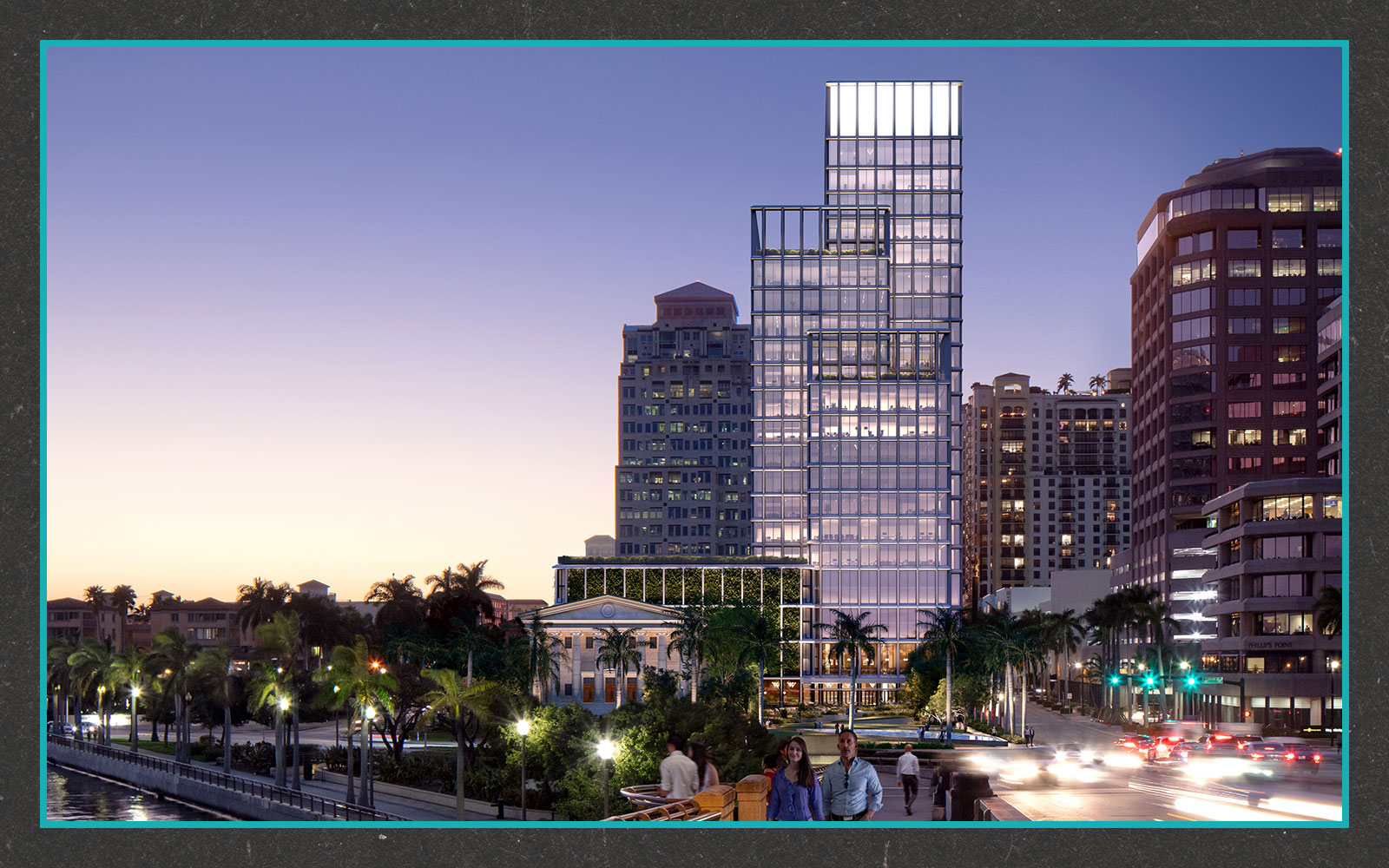Over the past three years, South Florida earned a reputation as a mecca for financial firms fleeing New York, Chicago and San Francisco. The likes of Thoma Bravo, Apollo Capital Management, Founders Fund and, of course, Citadel, leased offices across the tri-county region.
Developers and brokers were abuzz over the activity, leading to a collective chorus boasting about the market’s good fortune and resilience to woes plaguing office buildings in the rest of the U.S.

West Palm Beach, once a city little known outside of South Florida, was rechristened “Wall Street South” for its role as a financial firm magnet. And the One Flagler project, under development by Steve Ross’ Related Companies as part of its hefty downtown West Palm portfolio, was dubbed the “hedge fund tower” in a nod to the tenants it’s expected to attract.

Yet, the total amount of space that financial firms have leased in South Florida veers off the hype, according to data. While it’s indisputable that these companies made a move to South Florida, it translated to an initial spurt in deals –– with activity tapering off after that, according to statistics from CompStak, which crowdsources its data based on deals reported to its database.
“There was an initial gold rush for Class A space that happened,” said John Bell, of Transwestern. “But eventually there were only so many tenants that are going to be coming down to the South Florida market.”
In 2020, when the Sunshine State’s early pandemic reopening made it a top choice among venture capitalists and hedge funders, activity was strong. That year, the square footage financial firms leased in South Florida represented nearly a quarter of all office square footage leased, according to the CompStak data. In that, South Florida outpaced major financial hubs, including Chicago and New York, where financial firm leasing represented 24.4 percent and 23.5 percent of the total space leased, respectively, the data shows.
Since then, financial firms consistently have taken less space in South Florida. Financial firm leasing represented 23.3 percent of all office leases in 2021, 16 percent last year and 8.2 percent this year, according to CompStak.
Indeed, the pipeline is tapped out, said Jeremy Larkin of NAI Miami.
“Why are they not coming in greater quantities?” he said. “There’s a finite universe.”
What else gives?

Generally, South Florida office leases are for smaller spaces compared with New York, Chicago and elsewhere, and this extends to financial firms.
Companies’ southward expansion was limited to executives opening a small South Florida outpost, while support staff members, or the operations that require bigger offices, remained out of state.
“We don’t have a lot of back office [services for] financial service firms located here,” Bell said. “The accounting, the people that are doing the call center functions, people who are doing the administrative work” are not in South Florida.
According to a tally by Bloomberg, the influx of companies from New York and California to South Florida amounted to 63 firms coming to Miami, 11 to Miami Beach and 37 across Palm Beach County over the past three years.
Yet, Larkin said, this wouldn’t necessarily translate to strong office leasing, as many financial firms’ expansions consisted of opening a small office for a few executives, while keeping all other employees in the donor markets.
“The [South Florida] branch may be an executive office branch and have the staff in New York,” he said.
Broker Donna Abood, however, disagreed with parts of the CompStak data.

The slowdown of financial firm leasing started in the second quarter of this year, not after 2020, she said.
Persistent inflation and expensive borrowing costs have curbed companies’ expansion plans, including the scrapping of office expansions, said Abood of Avison Young. Plus, firms also could be turned off from leasing space because of pricey construction materials and labor that make for costly office interior build-outs. That’s across industries, financial and other.
Rents for prime office buildings in South Florida, mainly in Brickell and downtown West Palm Beach, reached new heights, with asking rates topping $100 per square foot. That cost could also be thwarting expansion plans.
“We have a very questionable economy right now, taking its toll on corporate growth and confidence,” she said.
Other markets growing
As the tide has turned in South Florida, the financial industry is taking more space in other markets.
In New York, space leased by financial tenants accounted for 31.7 percent of all office square footage leased this year, according to CompStak. In Chicago financial firms accounted for 22.6 percent of total space leased. San Francisco and LA County followed, with financial firms representing 15.8 percent and 12.6 percent of total office leasing, respectively.
All outpaced South Florida, where financial firm leasing accounted for 8.2 percent of total office space leased this year, CompStak shows.
Larkin argues that this is more of a stabilization to “normal growth patterns,” after the leasing flurry of 2020. In addition, the influx of out-of-state companies built up South Florida’s resiliency to the recent slowdown created by economic stagnation, he said.
Indeed, said Transwestern’s Bell, the overall office market here still is outperforming much of the rest of the U.S.
“People across the rest of the country,” he said, “would love to have our so-called slowed level of leasing activity.”
Read more



